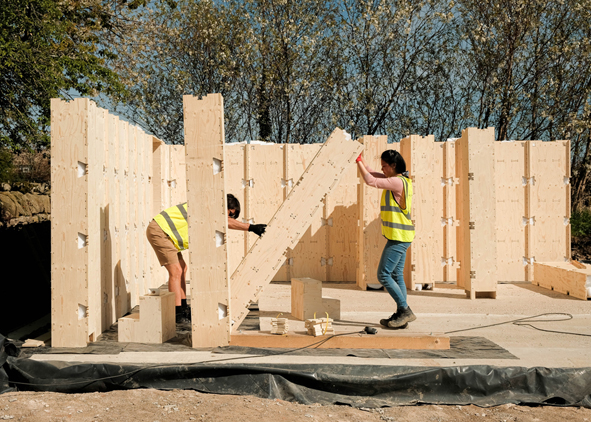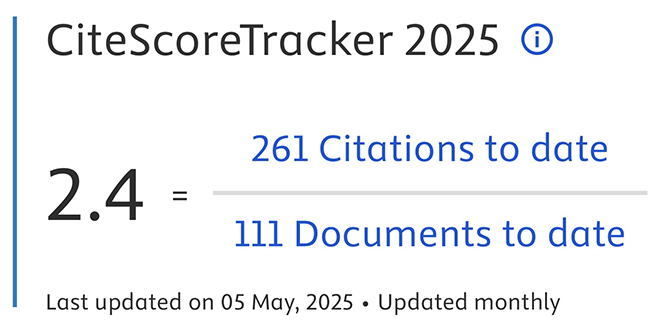Towards a circular project, between architecture and exhibition design. Digital platforms for reuse practices
DOI:
https://doi.org/10.19229/2464-9309/12212022Keywords:
design-led transition, collaborative platforms, digital mediation, circular economy, reuseAbstract
Sustainable development and digital transition find wide space in the debate around design disciplines that take up the theme at different paces. While architectural and urban design research has long been working towards innovating design and construction paradigms in a sustainable and circular sense, exhibition design has slowly integrated these aspects into its creation and management structures. From this perspective, the digital transition represents an excellent opportunity to develop integrated systems for circular production chains. The text explores the state of arts in architecture and exhibition design, identifying innovation trajectories within cases of emblematic collaborative platforms, and highlighting their limitations and mutual lessons learned.
Downloads
Article Metrics Graph
References
Ahmed, Z. A., Qaed, F. and Almurbati, N. (2020), “Enhancing Museums’ Sustainability Through Digitalization”, in 2020 Second International Sustainability and Resilience Conference – Technology and Innovation in Building Designs, IEEE, pp. 1-4. [Online] Available at: doi.org/10.1109/IEEECONF51154.2020.9319977 [Accessed 05 October 2022].
Bach, B., Stefaner, M., Boy, J., Drucker, S., Bartram, L., Wood, J. Ciuccarelli, P., Engelhardt, Y., Köppen, U. and Tversky, B. (2019), “Narrative Design patterns for interactive storytelling”, in Henry Riche, N., Hurter, C., Diakopoulos, N. and Carpendale, S. (eds), Data-Driven Storytelling, A K Peters/CRC Press, New York.
Baiani, S. and Altamura, P. (2018), “Superuse e upcycling dei materiali di scarto in architettura – Progetto e sperimentazione | Waste materials superuse and upcycling in architecture – Design and experimentation”, in Techne | Journal of Technology for Architecture and Environment, vol. 16, pp. 142-151. [Online] Available at: doi.org/10.13128/Techne-23035 [Accessed 05 October 2022].
Campioli, A., Dalla Valle, A. Ganassali, A. and Giorgi, S. (2018), “Progettare il ciclo di vita della materia – Nuove tendenze in prospettiva ambientale | Designing the life cycle of materials – New trends in environmental perspective”, in Techne | Journal of Technology for Architecture and Environment, vol. 16, pp. 86-95. [Online] Available at: doi.org/10.13128/Techne-23016 [Accessed 05 October 2022].
Choppin, J. and Delon, N. (2014), Matière grise – Matériaux, réemploi, architecture, Editions du Pavillon de l’Arsenal, Paris.
Ciorra, P. and Marini, S. (eds) (2011), Re-cycle – Strategie per la casa, la città e il pianeta – Catalogo della mostra, Electa, Milano.
ECESP – European Circular Economy Stakeholder Platform (2021), Circular Buildings and Infrastructure. [Online] Available at: eeb.org/wp-content/uploads/2022/04/circular_buildings_and_infrastructure_brochure.pdf [Accessed 05 October 2022].
Epifani, S. (2020), Sostenibilità digitale – Perché la sostenibilità non può fare a meno della trasformazione digitale, Digital Transformation Institute, Roma.
European Commission (2022), 2022 Strategic Foresight Report – Twinning the green and digital transitions in the new geopolitical context. [Online] Available at: ec.europa.eu/info/files/strategic-foresight-report-2022_en [Accessed 05 October 2022].
European Commission (2021), Level(s) – What’s in it for construction companies and contractors, manufacturers, asset managers, facilities managers, and occupants? [Online] Available at: data.europa.eu/doi/10.2779/94980 [Accessed 05 October 2022].
European Commission (2019), Communication from the Commission to the European Parliament, the Council, the European Economic and Social Committee and the Committee of the Regions – The European Green Deal, document 52019DC0640, 640 final. [Online] Available at: eur-lex.europa.eu/legal-content/en/ALL/?uri=CELEX:52019DC0640 [Accessed 05 October 2022].
European Commission (2018), Directive (EU) 2018/851 of the European Parliament and of the Council of 30 May 2018 amending Directive 2008/98/EC on waste, document 32018L0851. [Online] Available at: eur-lex.europa.eu/legal-content/EN/TXT/?uri=CELEX%3A32018L0851 [Accessed 05 October 2022].
European Commission (2008), Directive 2008/98/EC of the European Parliament and of the Council of 19 November 2008 on waste and repealing certain Directives, document 32008L0098. [Online] Available at: eur-lex.europa.eu/legal-content/EN/TXT/?uri=celex%3A32008L0098 [Accessed 05 October 2022].
Franchino, R., Frettoloso, C. and Pisacane, N. (2019), “Tecnologia BIM e Innovazione Materiale – La Dimensione Ambientale | BIM Technology and Material Innovation – The Environmental Dimension”, in Agathón | International Journal of Architecture, Art and Design, vol. 5, pp. 41-50. [Online] Available at: doi.org/10.19229/2464-9309/552019 [Accessed 05 October 2022].
Giglio, F., Lauria, M. and Lucarelli, M. T. (2021), “Oltre la cultura dello scarto, verso processi circolari | Beyond the culture of waste, towards circular processes”, in Techne | Journal of Technology for Architecture and Environment, vol. 22, pp. 16-21. [Online] Available at: doi.org/10.36253/techne-11535 [Accessed 05 October 2022].
Giorgi, S. (2020), “Strumenti di supporto al progetto per dinamiche di economia circolare in edilizia”, in Perriccioli, M., Rigillo, M., Russo Ermolli, S. and Tucci, F. (eds), Il progetto nell’Era Digitale – Tecnologia, natura, cultura, Maggioli Editore, Santarcangelo di Romagna, pp. 243-245. [Online] Available at: research.gsd.harvard.edu/zofnass/files/2021/02/e-book_-AAVV_Design-in-the-digital-age.pdf [Accessed 05 October 2022].
Giorgi, S., Lavagna, M. and Campioli, A. (2019), “Circolare e sostenibile – Verso l’ottimizzazione dei flussi materici nei processi di riqualificazione edilizia in Italia”, in Ingegneria dell’Ambiente, vol. 6, issue 2, pp. 151-163. [Online] Available at: ingegneriadellambiente.net/ojs/index.php/ida/article/view/212 [Accessed 05 October 2022].
ISO 20121:2012 (UNI ISO 20121:2013), Sistemi di gestione Sostenibile degli Eventi.
ISPRA (2022), Rapporto rifiuti speciali – Edizione 2022. [Online] Available at: isprambiente.gov.it/files2022/pubblicazioni/rapporti/rapportorifiutispeciali_ed-2022_n-367_versioneintegrale.pdf [Accessed 05 October 2022].
Lanzigher, M. (2021), “[Sviluppo Sostenibile] Musei e crisi ambientale”, in Agenzia di stampa Cult, 04/05/2021. [Online] Available at: agenziacult.it/interni/sviluppo-sostenibile-musei-e-crisi-ambientale [Accessed 05 October 2022].
Leibing, E. and Blaim, M. A. (2020), “The Pilot Project Data – A comparative View”, in Brünger, S., Eppmann, T. and Mergel, K. (eds), Carbon Footprinting in Cultural Institution – Documentation of the Pilot Project and Work Materials, Kulturstiftung des Bundes, German Federal Cultural Foundation, pp. 18-20. [Online] Available at: kulturstiftung-des-bundes.de/fileadmin/user_upload/Klimabilanzen/Carbon-Footprinting-in-Cultural-Institutions.pdf [Accessed 05 October 2022].
Losasso, M. (2021), “Transizione circolare – Scenari per il futuro del progetto | Circular transition – Scenarios for the future of design”, in Techne | Journal of Technology for Architecture and Environment, vol. 22, pp. 7-9. [Online] Available at: doi.org/10.36253/techne-11532 [Accessed 05 October 2022].
Maida, D. (2021), “La Germania chiede ai musei qual è il loro impatto sull’ambiente”, in Artribune, 31/01/2021. [Online] Available at: artribune.com/dal-mondo/2021/01/germania-musei-impatto-ambiente/ [Accessed 05 October 2022].
MIC – Ministero della Cultura (2022), 155 Milioni di Euro per le imprese culturali e creative. [Online] Available at: creativitacontemporanea.beniculturali.it/wp-content/uploads/2022/05/Cartella-stampa-06.05.2022.pdf [Accessed 05 October 2022].
Nastro, S. (2021), “Online il carbon calculator di Gallery Climate Coalition, il network delle gallerie per l’ambiente”, in Artribune, 22/01/2021. [Online] Available at: artribune.com/arti-visive/arte-contemporanea/2021/01/gcc-carbon-calculator-gallerie-ambiente/ [Accessed 05 October 2022].
Rosa, P. (2003), “Un’esposizione partecipata”, in Manzini, E. and Jégou, F. (eds), Quotidiano sostenibile – Scenari di vita urbana – Un catalogo di soluzioni promettenti, Edizioni Ambiente, Milano, pp. 256-257.
Rota, M. (2019), Musei per la sostenibilità integrata, Editrice bibiliografica, Milano.
Russo, A. (ed.) (2021), Pensare e fare economia circolare – Dal Green New Deal Europeo ai territori, come trasformare la strategia in impianti, Guerini e Associati, Milano.
Senesi, A. (2022), “Design week Milano, Alessia Cappello: Troppo traffico, i grandi eventi devono essere più sostenibili”, in Corriere della Sera, 13/06/2022. [Online] Available at: milano.corriere.it/notizie/cronaca/22_giugno_13/design-week-milano-alessia-cappello-troppo-traffico-grandi-eventi-devono-essere-piu-sostenibili-73c3f8a6-ea7d-11ec-afb1-eda73379fb39.shtml [Accessed 05 October 2022].
van Hinte, E., Peeren, C. and Jongert, J. (2007), Superuse – Constructing new architecture by shortcutting material flows, nai010 publishers, Rotterdam.

Downloads
Published
How to Cite
Issue
Section
Categories
License
Copyright (c) 2022 Davide Crippa, Massimiliano Cason Villa, Barbara Di Prete, Lucia Ratti, Agnese Rebaglio, Marco Zanini, Francesca Zanotto

This work is licensed under a Creative Commons Attribution 4.0 International License.
This Journal is published under Creative Commons Attribution Licence 4.0 (CC-BY).
License scheme | Legal code
This License allows anyone to:
Share: copy and redistribute the material in any medium or format.
Adapt: remix, transform, and build upon the material for any purpose, even commercially.
Under the following terms
Attribution: Users must give appropriate credit, provide a link to the license, and indicate if changes were made; users may do so in any reasonable manner, but not in any way that suggests the licensor endorses them or their use.
No additional restrictions: Users may not apply legal terms or technological measures that legally restrict others from doing anything the license permits.
Notices
Users do not have to comply with the license for elements of the material in the public domain or where your use is permitted by an applicable exception or limitation.
No warranties are given. The license may not give users all of the permissions necessary for their intended use. For example, other rights such as publicity, privacy, or moral rights may limit how you use the material.


















































































